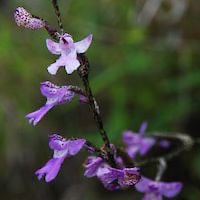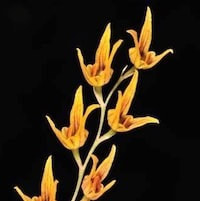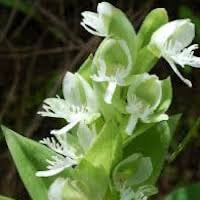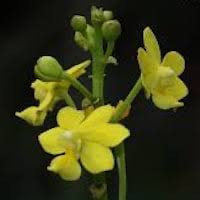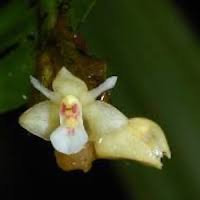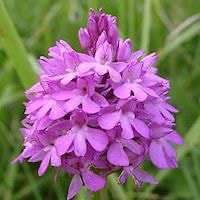MWD4- Men's Woody 4 - Let's cut a dill
|
Native Singaporean Orchid notes: Masdevallia Mejiana
Vanda concolor, known as Qinchunwandai Lan in Chinese and Khao kae in Thai, is valued in Chinese traditional medicine for its detoxifying properties and its ability to eliminate dampness from the body. It is traditionally used to treat ailments such as peripheral neuritis and ulcerative swellings like carbuncles. As with all herbal medicines, caution is advised, and consultation with a qualified herbalist or healthcare professional is recommended before using Vanda concolor medicinally. Proper dosage, preparation methods, and potential side effects or interactions with other medications should be carefully considered for safe and effective use.
|
Therapeutic Orchid notes:
|
Hemipiliopsis purpureopunctata (K.Y. Lang) Y.B. Luo & S.C. Chen Syn. Habenaria purpureopunctata K.Y.
Hemipiliopsis purpureopunctata, previously known as Habenaria purpureopunctata, blooms from June to July and thrives in various habitats such as evergreen forests and alpine slopes in southeast Xizang and northeast India. In Chinese herbal medicine, the whole plant is valued for its ability to relax muscles and alleviate muscle-related discomfort. In Woody 5 (Men) for a Team building Perfume workshop, its herbal fragrance could provide a distinct note associated with muscle relaxation. Perfumers might incorporate it to enhance perfume blends, contributing complexity and depth to the overall scent profile. |
|
Bulbophyllum reptans
Bulbophyllum reptans, known as Fushengshidou Lan, Baihuashidou Lan, or Shidou Lan in Chinese, is an orchid species valued for its medicinal properties in traditional Chinese medicine, where it's called Shilianzi. Believed to enrich Yin and cool the body, it's used for clearing phlegm, improving appetite, aiding digestion, and relieving dry throat. The plant contains phenanthrenes like coelonin and flavanthrin, which may offer medicinal benefits. In Woody 5 (Men) Team building Perfume workshops, its herbal scent could be utilized to create perfumes with therapeutic associations and complex aromatic profiles. |
|
Habenaria pectinata D. Don
Habenaria pectinata, known as Jianyeyufeng Hua in Chinese and Safed musli in India, is a terrestrial orchid found in the temperate regions of northeast India, Nepal, and Yunnan. In India, its leaves are crushed for snake bites, and its tubers mixed with condiments treat arthritis. In China, the whole plant addresses coughs, nephritis, and waist pain. Its medicinal properties have made it valuable in traditional herbal medicine, inspiring its use in the Woody 5 (Men) Team building Perfume workshop for its unique, evocative scent. |
|
Taprobanea spathulata (L.) Christenson. Syn. Vanda spathulata (L.) Spreng
Taprobanea spathulata, also known as Ponnamponmaraiva in the Malaya-lam dialect, is an epiphytic orchid found in India and Southeast Asia. In traditional herbal medicine, it has diverse uses:
|
|
Agrostophyllum stipulatum ssp. bicuspidatum .
Agrostophyllum stipulatum ssp. bicuspidatum, known as Heye Lan in Chinese, is an orchid species valued for both mythological beliefs and potential medicinal benefits. Its name derives from Greek words meaning "grass leaf," reflecting its leaf appearance. Among indigenous communities like the Kalabit in Sarawak, parts of this orchid are worn as protective talismans against curses, highlighting its cultural significance. Medicinally, Agrostophyllum species have been studied for their chemical compounds. These include terpenoids, stilbenoids, dimeric phenanthrenes, and a phenanthropyran derivative like agostrophyllin, known for antimicrobial, anti-inflammatory, and potential anti-cancer properties. While promising, further research and clinical trials are needed to confirm their effectiveness and safety in treating various health conditions, emphasizing the importance of consulting healthcare professionals before using them medicinally. |
|
Anacamptis pyramidalis
Anacamptis pyramidalis, an orchid species used for producing salep in Turkey and Iran, is valued for its high mucin content (44.72%) and low ash content (1.72%), making it ideal for premium quality salep. It also produces phytoalexins like orchinol and p-hydroxybenzyl alcohol, known for their antimicrobial properties. The orchid exhibits antioxidant abilities, potentially beneficial for protecting cells from oxidative damage. These properties have led to its use in skincare products for promoting skin health. Sustainable harvesting practices and regulatory measures are crucial to preserve orchid populations and ensure responsible use of their beneficial compounds in commercial products. |
Other scent note
Scentopia Library Reference ingredient
Oak - Check details at Scentopia's scent library
Download the guided mediation that works best with this Orchid fragrance oil
| men_woody_essential_oil_orchi_00004.mp3 | |
| File Size: | 190097 kb |
| File Type: | mp3 |
Join Scentopia's wonderful orchid scent crafting, fragrance tour, bridal shower or corporate team building which includes perfume making onsite and offsite, beach activities and more. We also serve primary school learning journey, secondary students and pupil on industrial excursions. Know more about our orchids perfume bar or therapeutic orchid scents and other wellness aromas. Conatct Perfume workshop or book a scent crafting session here.

